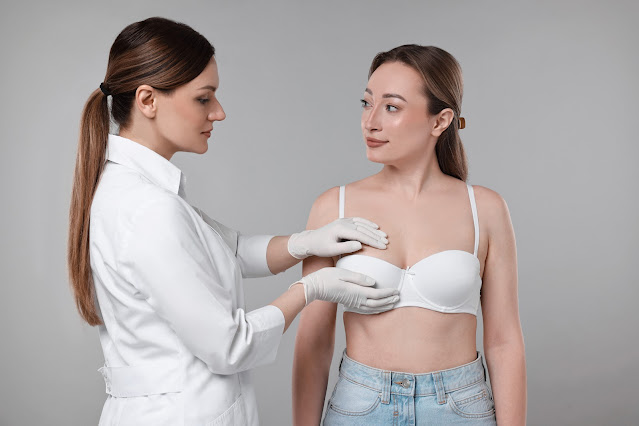Breast augmentation, often referred to as augmentation mammoplasty, is one of the most commonly performed cosmetic procedures worldwide.
Whether pursued for aesthetic reasons, body symmetry, or post-mastectomy reconstruction, the procedure involves the use of implants or fat transfer to enhance the size and shape of the breasts.
In Singapore, breast augmentation is performed under stringent medical regulations with a strong focus on safety and patient outcomes.
One prominent clinic, Nassim Plastic Surgery, provides comprehensive services tailored to individual needs, making it essential to understand the many layers involved in the decision-making process.
What is Breast Augmentation?
Breast augmentation is a surgical procedure designed to increase breast size or restore breast volume. This can be achieved through:
- Breast implants (silicone or saline)
- Fat transfer augmentation (using liposuctioned fat from other parts of the body)
The procedure is customizable and can address various concerns such as naturally small breasts, asymmetry, or volume loss due to weight reduction or pregnancy.
Types of Breast Implants
Breast implants are broadly categorized into two types:
- Saline Implants: Filled with sterile salt water. These implants are inserted empty and then filled during surgery. A rupture leads to absorption and natural expulsion of the saline by the body.
- Silicone Implants: These are filled with silicone gel, which tends to feel more natural. If a silicone implant leaks, the gel may remain within the implant shell or escape into the breast implant pocket.
There are also form-stable or “gummy bear” implants that retain their shape better, as well as textured versus smooth implants that differ in how they interact with the surrounding tissue.
Fat Transfer Breast Augmentation
This is a less invasive technique that uses liposuction to harvest fat from areas like the abdomen, thighs, or flanks, which is then injected into the breasts. This option is more natural and ideal for subtle enhancements but may not be suitable for those seeking significant size increases.
Ideal Candidates for Breast Augmentation
Not everyone is suited for the procedure. Ideal candidates typically:
- Are physically healthy and not pregnant or breastfeeding
- Have realistic expectations
- Are bothered by the feeling that their breasts are too small
- Experience loss of shape and volume due to aging or weight loss
- Seek improvement, not perfection
It’s essential to undergo a thorough consultation to determine whether breast augmentation aligns with the patient’s goals and physical characteristics.
Preoperative Considerations
Before undergoing breast augmentation, patients should:
- Have a detailed consultation with a board-certified plastic surgeon
- Discuss medical history, allergies, and current medications
- Evaluate various implant types and surgical approaches
- Undergo necessary diagnostic tests, such as a mammogram
- Avoid smoking and certain medications before surgery
Patient education is a critical step in setting the right expectations and ensuring safety.
The Surgical Process
Breast augmentation is typically performed under general anesthesia and takes 1 to 2 hours. Key steps include:
- Incision: Common options include inframammary (under the breast), periareolar (around the nipple), or transaxillary (in the armpit).
- Placement of Implant: Either under the pectoral muscle (submuscular) or directly behind the breast tissue (subglandular).
- Closure: Layered sutures are used to close the incisions, which are then dressed to support healing.
Patients are monitored in a recovery area immediately after the procedure and usually go home the same day.
Recovery and Aftercare
Recovery typically involves:
- Swelling and discomfort for the first few days
- Wearing a special surgical bra
- Avoiding heavy lifting and strenuous activities for at least 4-6 weeks
- Returning to light work within a week (depending on the nature of the job)
Follow-up appointments are essential to monitor healing and detect any potential complications early.
Potential Risks and Complications
Like any surgical procedure, breast augmentation carries risks, such as:
- Capsular contracture (hardening of scar tissue)
- Implant rupture or leakage
- Changes in nipple or breast sensation
- Infection or bleeding
- Implant displacement
Choosing a qualified and experienced plastic surgeon significantly reduces these risks.
Longevity and Maintenance
Breast implants are not lifetime devices. While they can last 10–20 years, some may need replacement sooner due to rupture, capsular contracture, or aesthetic reasons. Regular check-ups, including MRI or ultrasound screening, are recommended to ensure implant integrity over time.
Fat transfer results can also be long-lasting, but the final volume may decrease slightly as some of the fat may be reabsorbed.
Psychological and Social Considerations
Beyond physical transformation, breast augmentation can impact self-esteem and body image. Many patients report higher confidence and improved quality of life post-procedure. However, it’s important to approach surgery with a healthy mindset and avoid unrealistic expectations shaped by media or societal pressure.
Mental readiness is just as important as physical preparation, and counseling may be beneficial for some.
Trends in Breast Augmentation in Singapore
In Singapore, trends are leaning towards natural-looking results, smaller implant sizes, and minimally invasive techniques. Patients are increasingly informed and selective, prioritizing safety, surgeon reputation, and long-term outcomes.
Clinics like Nassim Plastic Surgery have adapted by offering tailored treatment plans that consider lifestyle, body frame, and aesthetic preferences.
Breast Augmentation and Breastfeeding
A common concern is whether implants affect breastfeeding. Most women with breast implants can successfully breastfeed, especially if the incision is made under the breast rather than around the nipple. However, it’s crucial to discuss this with the surgeon if future breastfeeding is a priority.
Conclusion
Breast augmentation is a deeply personal decision that requires careful consideration, thorough research, and professional guidance. It’s not just about size enhancement but about achieving harmony, confidence, and body positivity.
Understanding the different methods, risks, and expectations is essential for anyone considering the procedure. In Singapore, where high standards in medical care are upheld, clinics like Nassim Plastic Surgery continue to provide safe, effective, and aesthetically pleasing outcomes for individuals ready to make this transformative choice.
